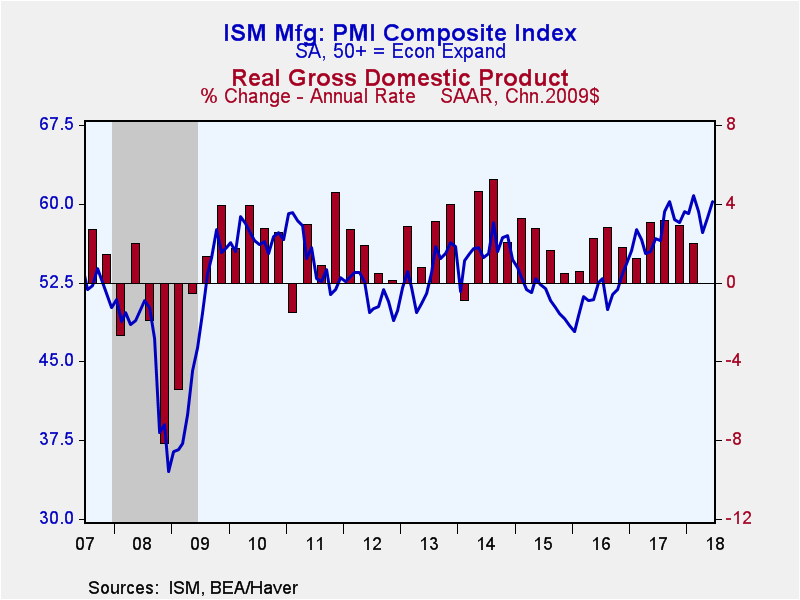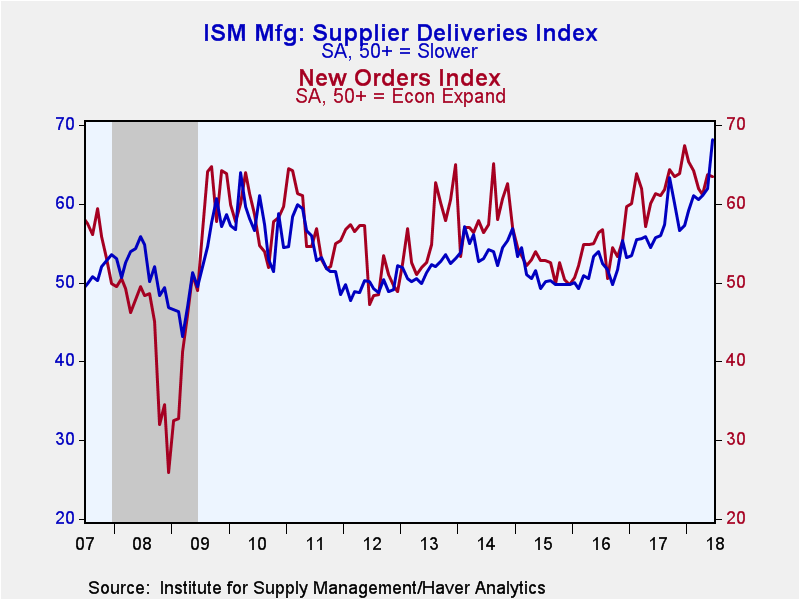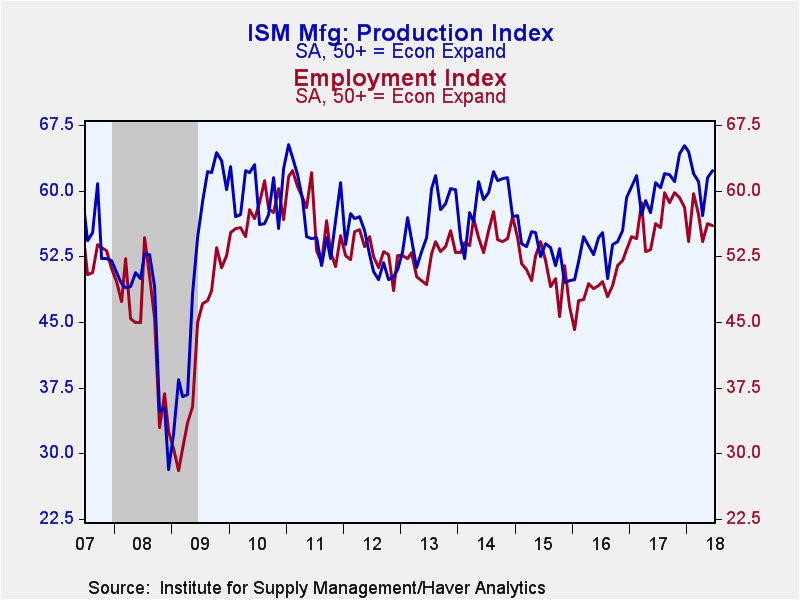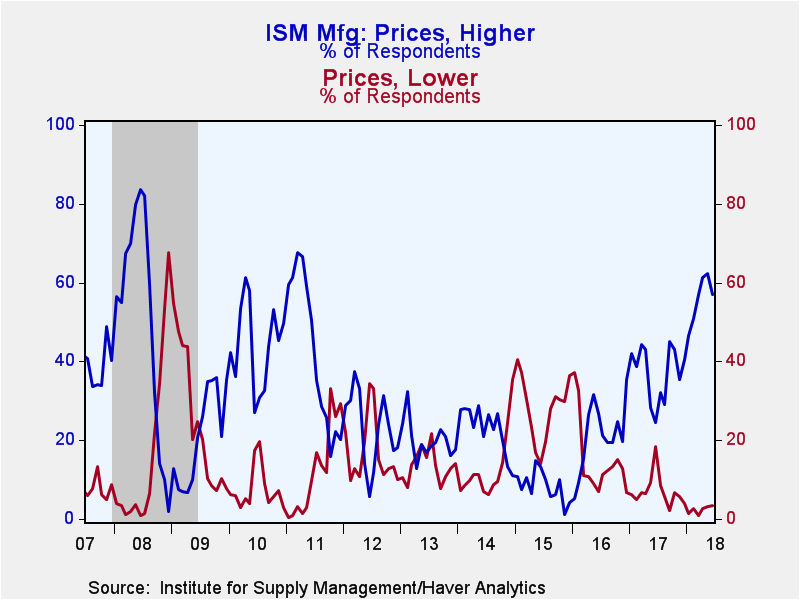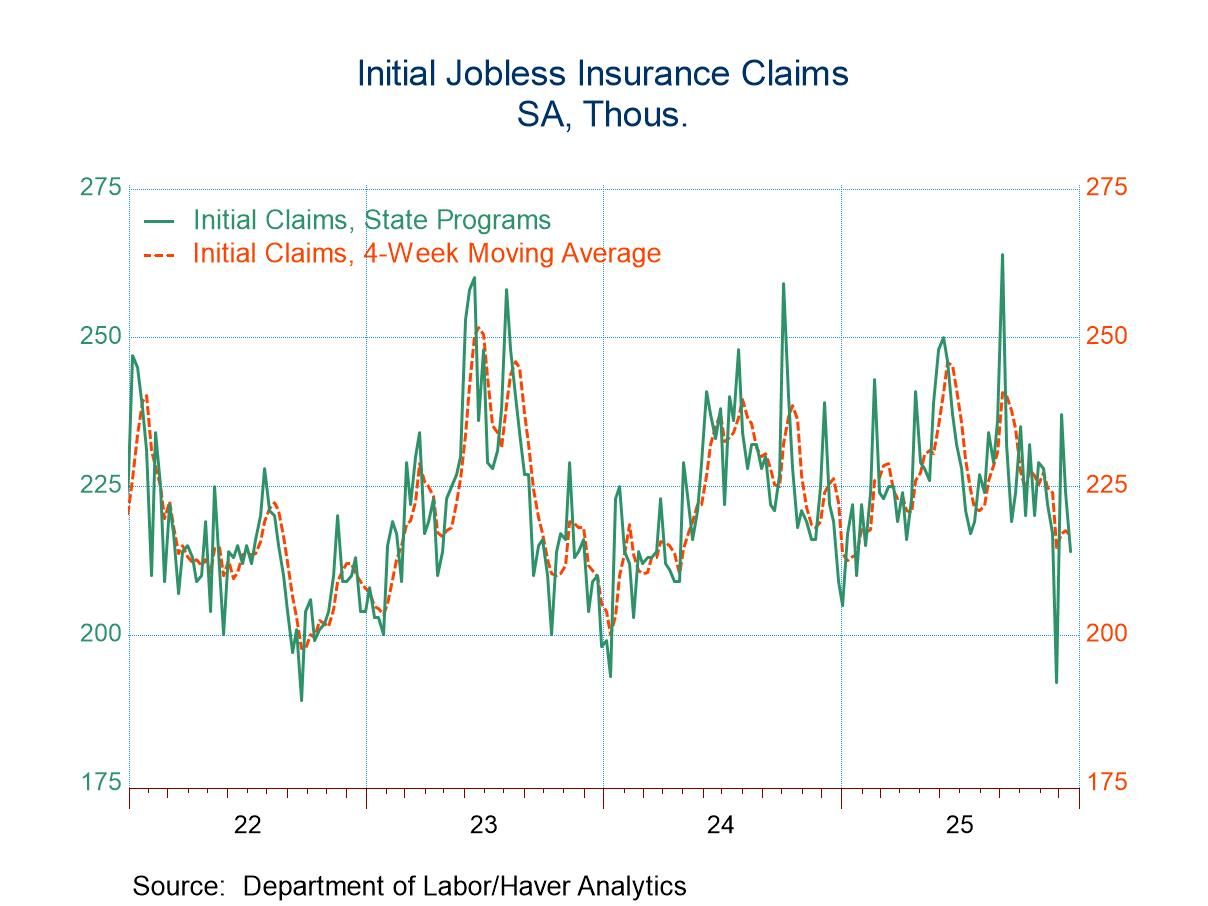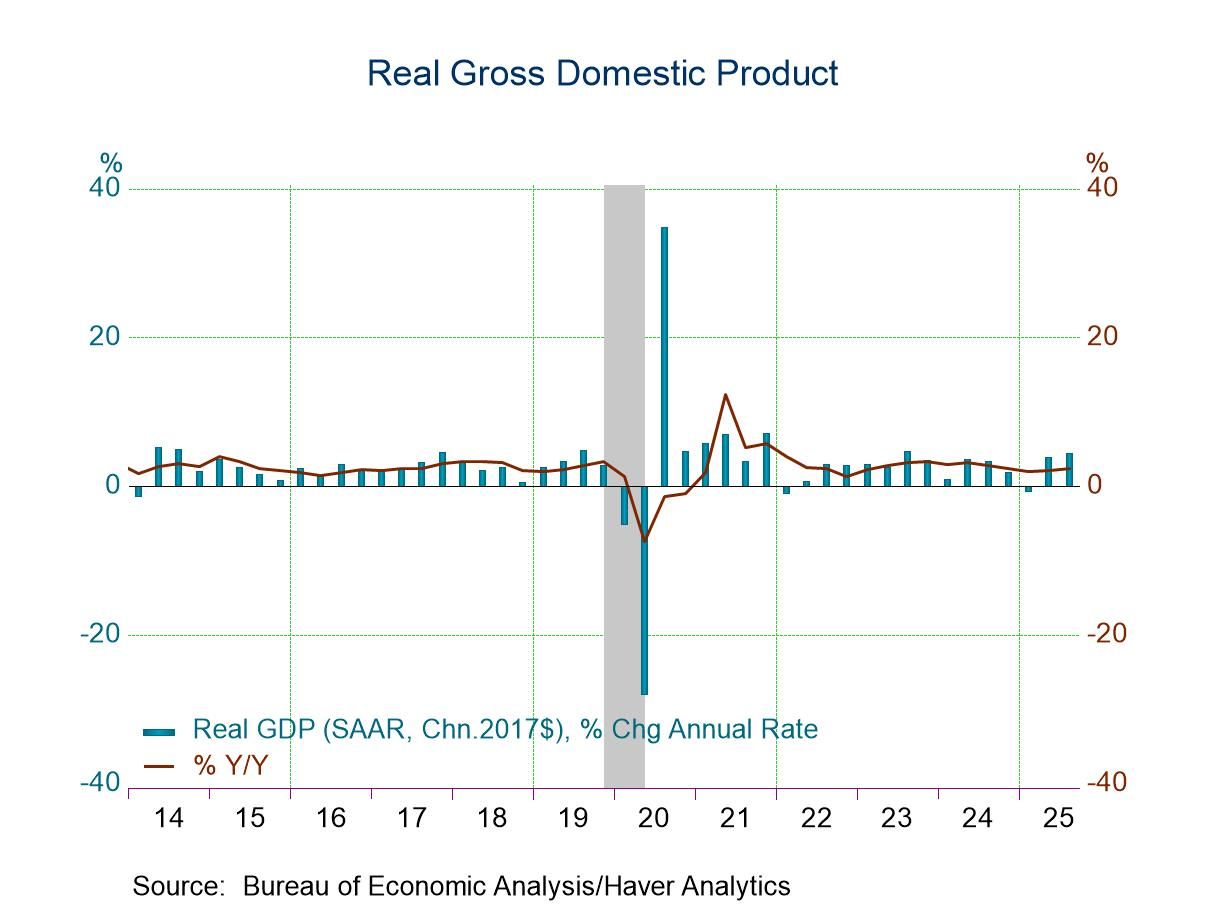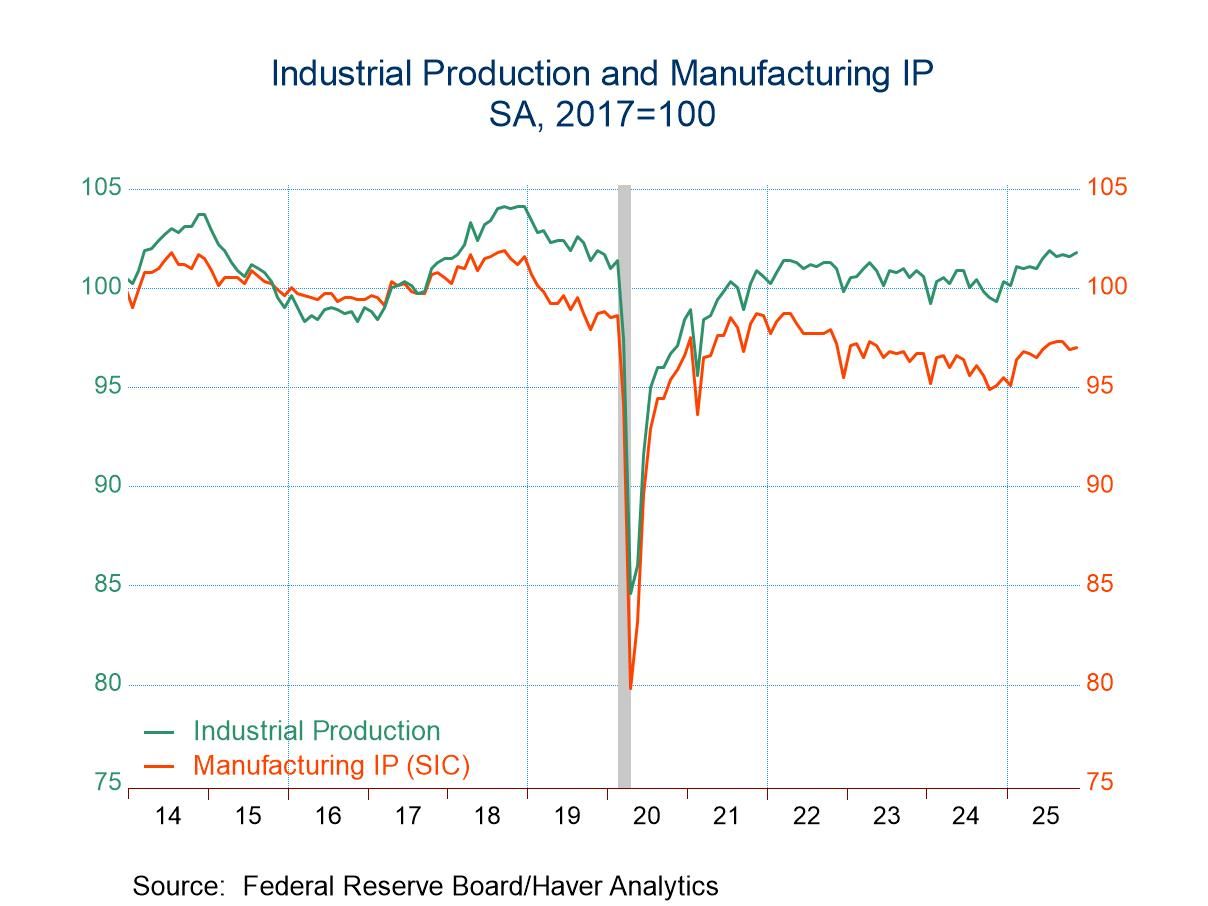 Global| Jul 02 2018
Global| Jul 02 2018ISM Factory Sector Index Improves; Pricing Power Eases
by:Tom Moeller
|in:Economy in Brief
Summary
The factory sector expansion continues in the U.S. The ISM composite index of activity in the factory sector rose to 60.2 during June from May's unrevised 58.7. It was the highest index level since February. A reading of 58.5 had been [...]
The factory sector expansion continues in the U.S. The ISM composite index of activity in the factory sector rose to 60.2 during June from May's unrevised 58.7. It was the highest index level since February. A reading of 58.5 had been expected in the Action Economics Forecast Survey. During the last ten years, there has been a 75% correlation between the index level and q/q growth in real GDP.
A surge in the supplier delivery series to 68.2 led the composite index higher. It indicated the slowest product delivery speeds since May 2004. Thirty-eight percent (NSA) of respondents reported slower delivery speeds while two percent reported them faster. The production index rose to 62.3, the highest level since January. The other component series were fairly stable m/m. The inventories series ticked higher to 50.8 but remained well below the February high of 56.7. The new orders index was essentially unchanged at 63.5, well above the December 2015 low of 49.7.
The employment series eased m/m to 56.0 and remained below the high of 59.8 last August. Twenty-nine percent (NSA) of respondents reported improved hiring while eleven percent reported less. During the last ten years, there has been an 84% correlation between the level of the index and the m/m change in factory sector payrolls.
The prices paid index slipped to 76.8 (NSA) from 79.5. It remained well above the January 2016 low of 33.9 when just five percent of respondents reported higher prices and 37% reported them lower. These results shifted to 57% higher and three percent lower last month.
Amongst the other ISM series which are not in the composite, the export order series ticked higher m/m to 56.3 but was below February's high of 62.8. The imports index rose to 59.0, up from 53.5 a year earlier and 46.0 at the December 2015 low. The capital expenditure series remained strong at 143, up from 118 at its 2014 low.
The ISM figures are diffusion indexes where a reading above 50 indicates expansion. The figures from the Institute for Supply Management can be found in Haver's USECON database. The expectations number is available in Haver's AS1REPNA database.
| ISM Mfg (SA) | Jun | May | Apr | Jun'17 | 2017 | 2016 | 2015 |
|---|---|---|---|---|---|---|---|
| Headline Index | 60.2 | 58.7 | 57.3 | 56.7 | 57.4 | 51.4 | 51.3 |
| New Orders | 63.5 | 63.7 | 61.2 | 61.3 | 62.2 | 54.5 | 52.3 |
| Production | 62.3 | 61.5 | 57.2 | 60.9 | 61.0 | 53.8 | 59.3 |
| Employment | 56.0 | 56.3 | 54.2 | 56.3 | 56.8 | 49.2 | 50.7 |
| Supplier Deliveries | 68.2 | 62.0 | 61.1 | 55.7 | 56.8 | 51.8 | 50.8 |
| Inventories | 50.8 | 50.2 | 52.9 | 49.0 | 50.4 | 47.5 | 49.4 |
| Prices Paid Index (NSA) | 76.8 | 79.5 | 79.3 | 53.0 | 65.0 | 53.1 | 40.1 |
Tom Moeller
AuthorMore in Author Profile »Prior to joining Haver Analytics in 2000, Mr. Moeller worked as the Economist at Chancellor Capital Management from 1985 to 1999. There, he developed comprehensive economic forecasts and interpreted economic data for equity and fixed income portfolio managers. Also at Chancellor, Mr. Moeller worked as an equity analyst and was responsible for researching and rating companies in the economically sensitive automobile and housing industries for investment in Chancellor’s equity portfolio. Prior to joining Chancellor, Mr. Moeller was an Economist at Citibank from 1979 to 1984. He also analyzed pricing behavior in the metals industry for the Council on Wage and Price Stability in Washington, D.C. In 1999, Mr. Moeller received the award for most accurate forecast from the Forecasters' Club of New York. From 1990 to 1992 he was President of the New York Association for Business Economists. Mr. Moeller earned an M.B.A. in Finance from Fordham University, where he graduated in 1987. He holds a Bachelor of Arts in Economics from George Washington University.


